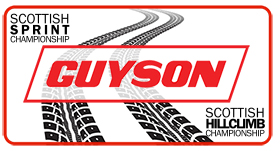
Shortly after the invention of the horseless- carriage, man’s competitive instinct created a sport where drivers and their vehicles would challenge each other in timed speed trials, and this would be the forerunner of what we know today as sprints and hill climbs
In the early years it was mainly the well-heeled gentry who could buy the new contraption called the motor car and afford the cost of accident damage which was prevalent in their ‘gung-ho’ competition.
Suitable venues were needed that would provide for driver skill and car performance. What better than a section of a tarmac road with twisting bends and upward gradients?
So, in 1906 Scottish hillclimbing was born in the remote and wild hills of Arrochar at the now famous Rest-and-be-Thankful. Then in 1934 another equally famous venue was found in the Bo’ness Kinneil Estate near Falkirk. Even today this venue continues hosting highly successful revival events. These 2 venues attracted some of the big names in early speed sport like regular winners Raymond Mays and Ken Wharton, and Sir Stirling Moss. Our own Sir Jackie Stewart cut-his-teeth in 1961 with his Ford powered Marcos at the Rest-and-be Thankful.
The Bo’ness events were run over the years by several different car clubs but it’s interesting to note that 2 of these clubs were Scottish Sporting Car Club and Lothian Car Club both of whom continue today as top organising clubs in the current Scottish Sprint and Hill Climb Championships.
Scottish sprinting began in 1950 at Scotland’s first motor racing circuit at Winfield, an ex-military airfield in the Scottish borders. This venue was short lived as it would require full resurfacing for international race events and the organisers could not risk the expense due to the military unable to give assurances that the venue would not be re-activated. Fortunately, racing was switched to neighbouring Charterhall airbase which grew into an international full race venue. Other disused WW2 airfields were found albeit some short lived at Turnberry in Ayrshire, Edzell in Angus, and Crimond in Aberdeenshire. Additional locations were created at Ingliston, Kames, Crail, Wick Airport, East Fortune, Knockhill, Alford, Boyndie, and Golspie.
Through the years new venues were also found for Scottish hillclimbing at Rumster, Durris, Fintray, Doune, Strathclyde Park, High Auldgirth, and Forrestburn. Initially, events were simply run through the enthusiasm of locally formed car clubs, but eventually in the interest of safety and to incorporate more robust competition rules and regulations, the 2 disciplines were brought under the auspices of the RSAC (Royal Scottish Automobile Club) and later by the MSA (Motor Sport Association), known today as Motorsport UK.
The Scottish Sprint Championship and The Scottish Hill Climb Championship were administered by their own separate committees, and the events were organised at the various venues by the local car clubs. Both the sprint and hills championships enjoyed support from several businesses notably RM Hall supporting sprinting and Guyson International supporting hillclimbing
ln 2004 the committees amalgamated bringing the 2 disciplines under the control of a single committee, and today the long-standing support from Guyson International continues. The Championships are proud of their long history where many of the competitors became notable names in national and global motorsport. To name a few, Jackie Stewart, Jim Clark, John Cleland, Wallace Menzies, Graeme Wight (Jnr), Colin Calder, Harry Simpson, Kenny Allen, Heather Calder, and Alex Graham. The list does not stop here as many more Scottish speed competitors have excelled in the sport and their names are engraved on major trophies which are perpetuated for future generations to applaud.
(Mike Murchie)

